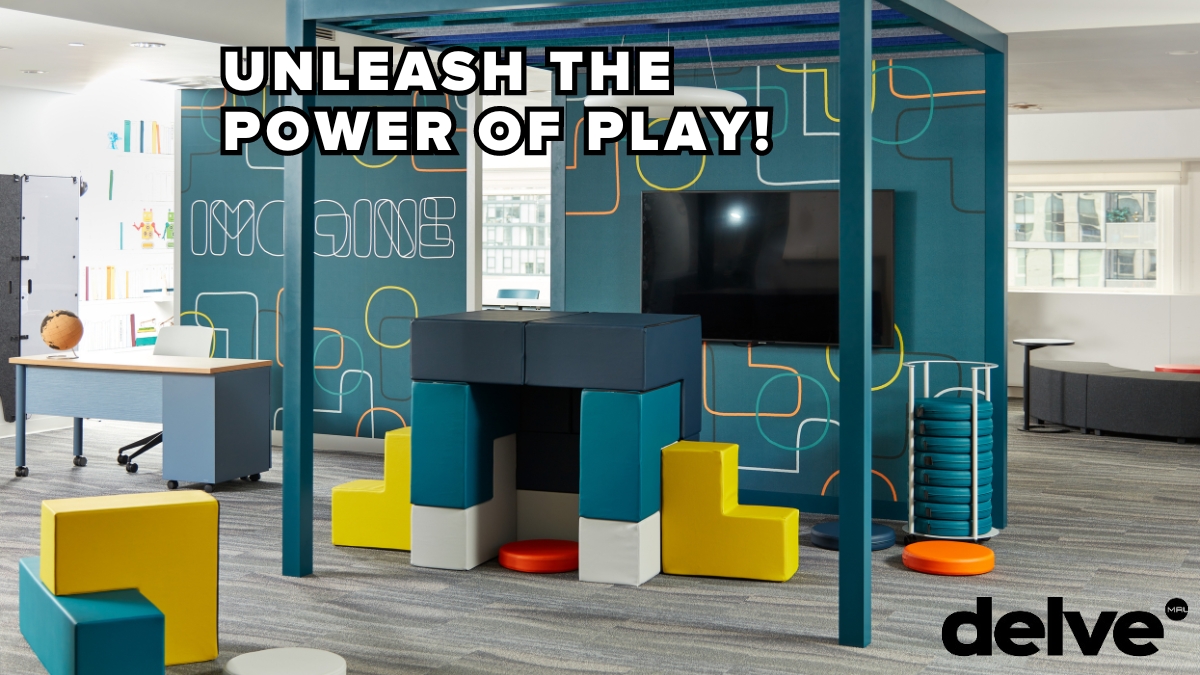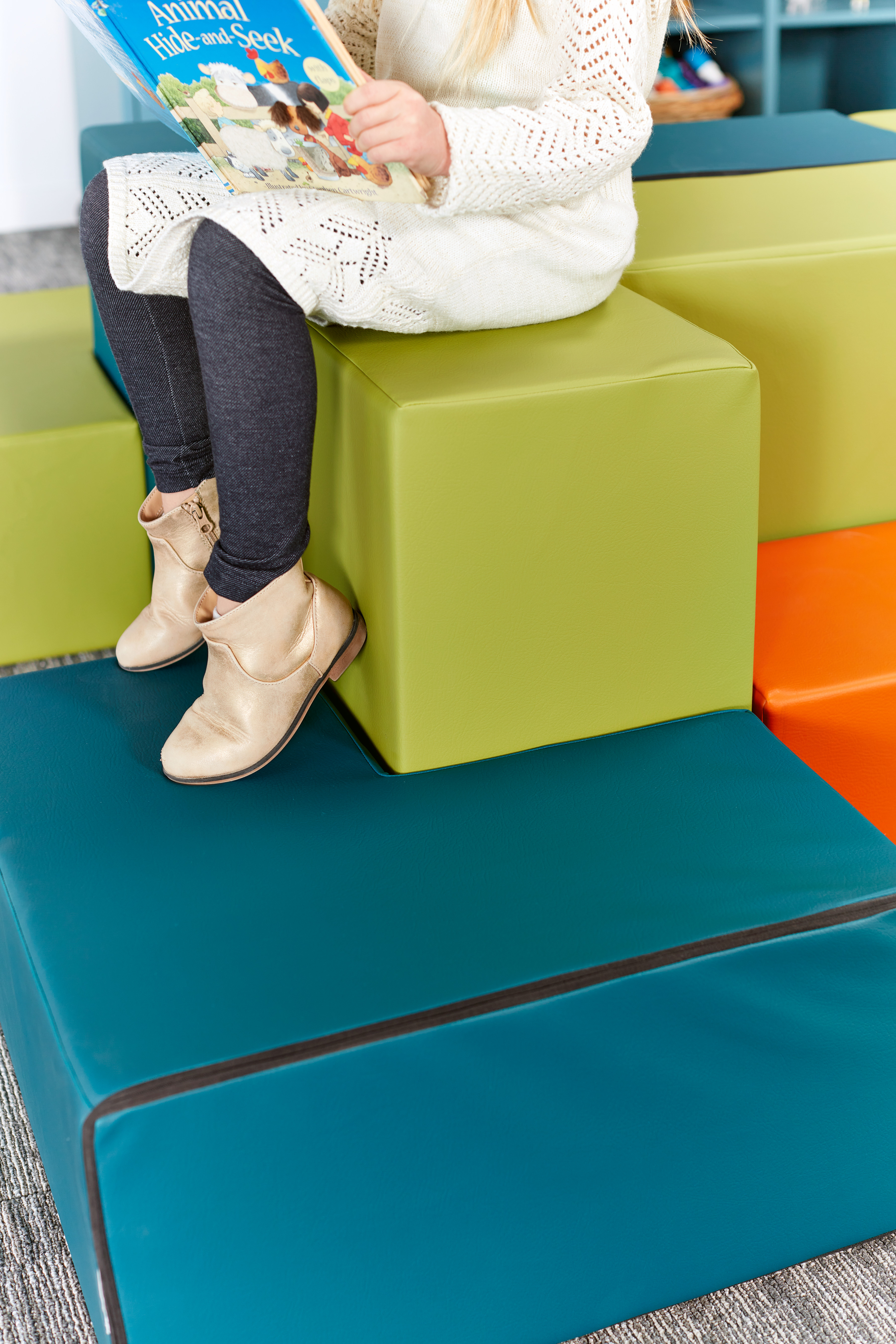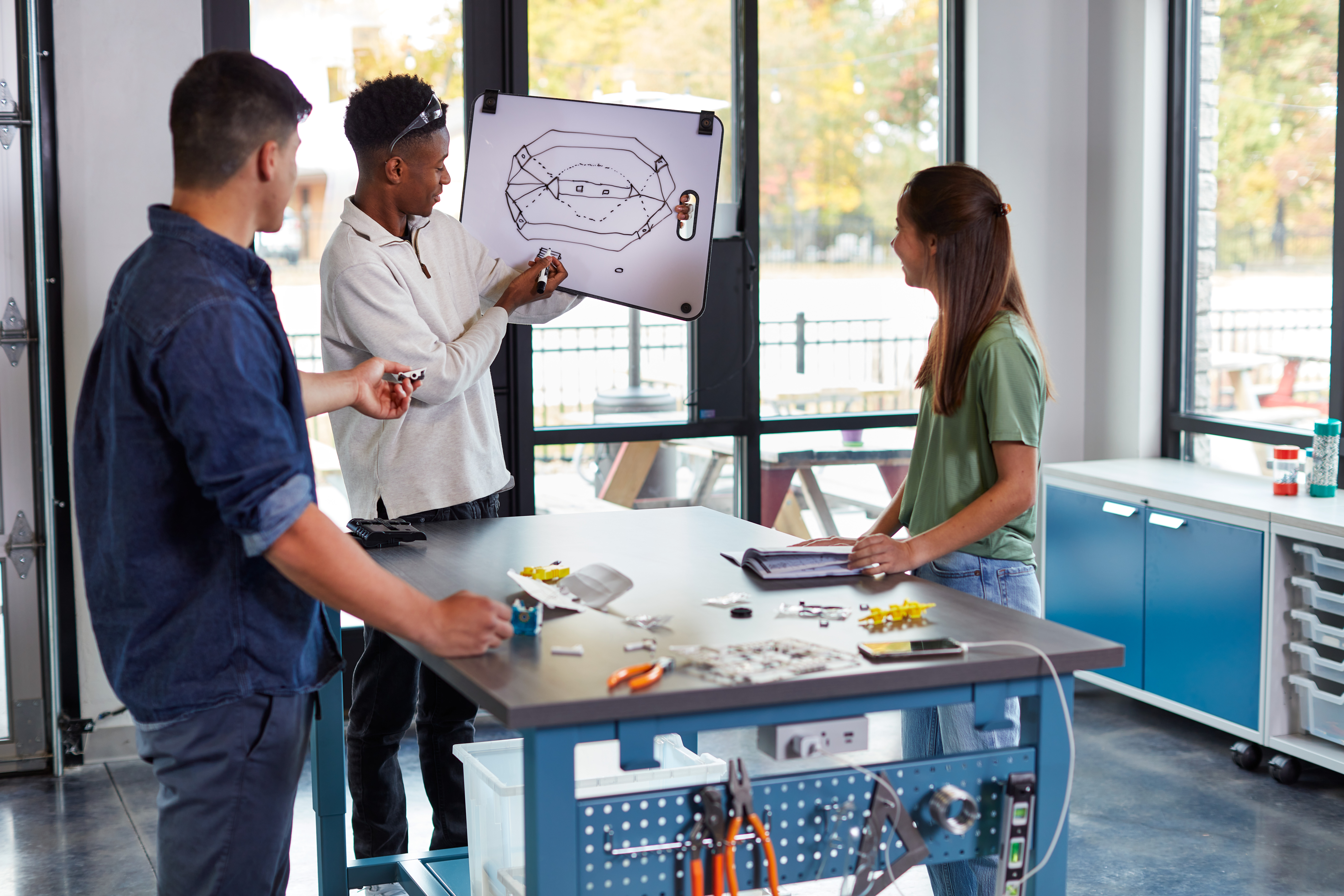Unleash The Power of Play!

By delve magazine | EDspaces Edition 2023
Celebrating joy and fun in the classroom
Classroom design plays critical role in student development.
Feelings of joy and happiness are something people crave. Joy can alleviate stress, increase productivity, and foster creative thinking. For students especially, joy and fun are key differentiators in their learning capacity and their overall well-being.
Studies show that students of all ages are more engaged with their learning if “fun” is part of the equation. The KI education team knows this too – from years of experience in the classroom.
"We know from our own experiences that students learn better by doing – when they have fun and can interact with their peers and the lessons and materials before them in unique ways,” - Bryan Ballegeer, vice president of education at KI.
Classroom design has evolved to reflect the need for more interactive and playful lessons. Rows of desks, set up for students to focus on a lecture at the front of the room, don’t typically elicit an atmosphere of fun.
“When done right, the design of a learning space can and should enhance student learning,” says Ballegeer.
Harness the power of play and movement
Students of all ages need playtime.
Work doesn’t feel like work when it’s something we love doing, and learning that incorporates fun doesn’t have to feel like learning either.
“Play is the most natural form of learning,” says Emily Mc-Ginnis, K-12 education market manager at KI. “Students learn from their interactions and experiences with each other and their surroundings. Whether they’re in pre-K or college, most students don’t want to sit in one place all day.”

For K-12 students, play primarily happens out of their chairs or on the floor of the classroom.
Colorful carpets and soft, movable furniture satisfy their desire to escape for independent learning time or allow them to build forts, create, and problem-solve with their peers during free play or project assignments.
While designated areas in some classrooms offer ways for students to “shake their sillies out,” play games, or loosen up with a fun dance party, larger class sizes and limited space are realities many classrooms encounter.
Incorporating mobile furniture like nesting tables and chairs, whiteboard screens, and versatile storage options can provide space-saving opportunities and flexibility for play areas in a classroom.
Chairs and stools that encourage subtle movements – like swaying, rocking, or swiveling, provide educators a way to incorporate valuable movement into any lesson, even if students remain in their seats.
“Playing within the context of school can lead to more engaged students and increased critical thinking and creativity skills,” says McGinnis. “Research shows that teachers using a playful curriculum feel more effective as educators because the students are more engaged.”
In higher education, play happens in the classroom, but it’s even more prevalent in the learning and development that occurs outside the classroom, says Katie Clark, higher education market manager at KI.
“The spaces we create and the opportunities we provide play a critical role in counterbalancing the stress and pressure students today feel,” says Clark.
Playful spaces in higher education are often transitional spaces – student lounges, cafés, libraries, or innovation centers.
These fun, functional, and colorful areas meet a variety of student needs that include peaceful respites, space for social activities, or playtime hosted by extracurriculars like e-sports or campus life organizations.
"All students need spaces where they can escape and let go – where they can find joy in their educational experience,” says Clark. “It’s so incredibly important for their development.”
Giving students the freedom to create
A recent Gallup study on creativity in the classroom found that students who engaged in creative thinking assignments were better able to:
- Draw connections between subjects
- Retain material
- Demonstrate a deeper understanding of topics
- Problem solve
- Think critically
Creative assignments can increase confidence among students of all ages, says McGinnis.
“These assignments can help develop their ability and willingness to master challenging material, take risks, and harbor responsibility for their own learning,” says McGinnis. “When students feel confident about their ability to learn, their mood and morale improve, too.”

The creation of dedicated makerspaces in educational institutions gives students the opportunity to use hands-on techniques and tools to make something new, discover problems and solutions, and consider how their learning can be applied to real life.
For students, the ability and freedom to be creative and messy with their work leads to profound development and big ideas, says Clark.
“The world is full of really hard, really complex issues and challenges,” says Clark. “Those problems are only going to be fixed with new ideas and creative problem solving – that’s what is going to get us to a better place. Educating our future leaders, using all the tools possible, is going to give them the opportunity to find those solutions and not get sucked into the doom and gloom of the issue.”
The freedom to play, initiate learning, and problem solve is exponentially beneficial to building a student’s confidence and well-being whether they are 5 years old or 20.
Unleash the power of play in the classroom
By embracing the creation of environments that support joy and play, K-12 and higher education institutions have an opportunity to help students develop their social, emotional, and life skills in a way that’s fun and doesn’t actually feel like learning.